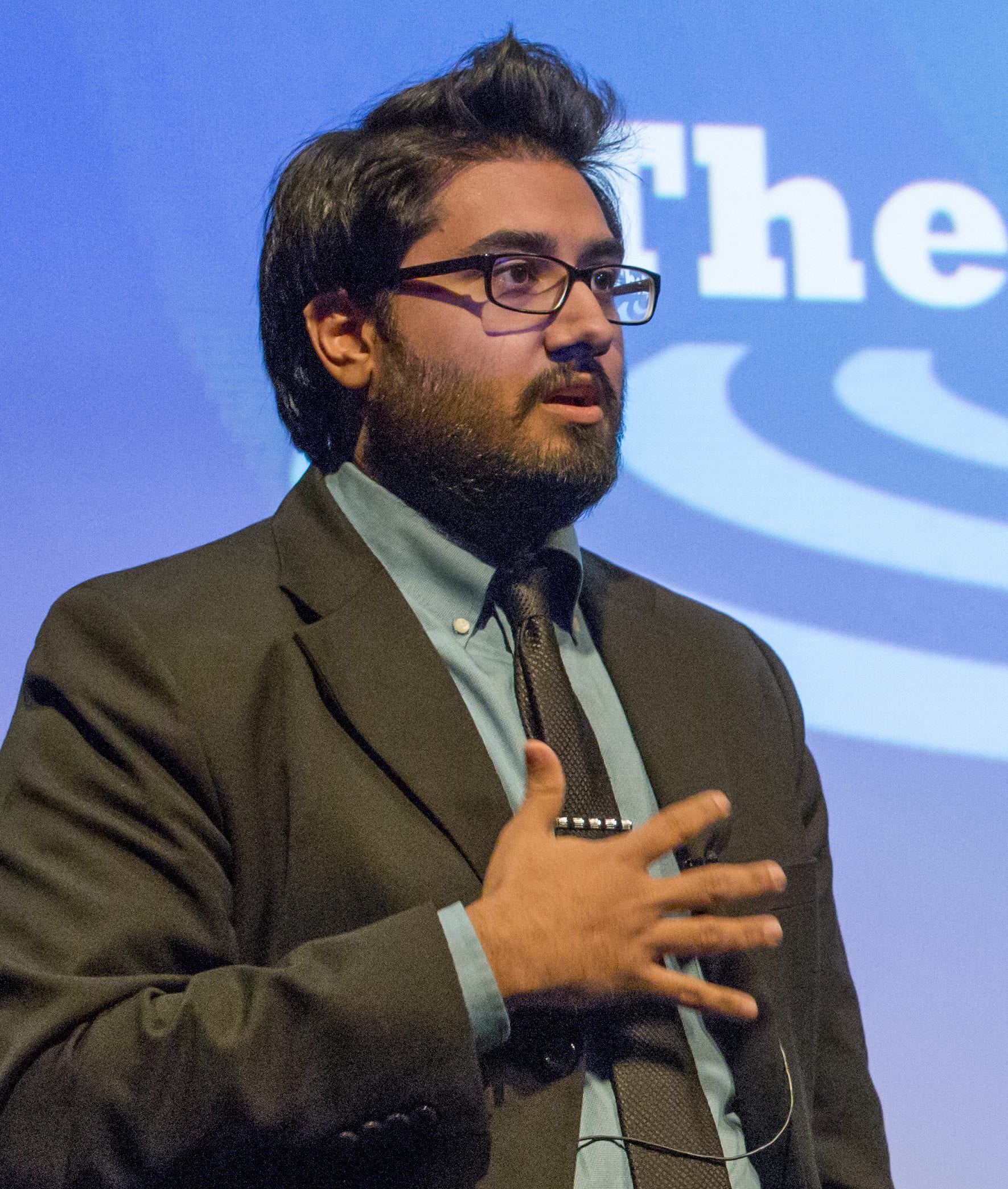On December 15, 2017, Alexander “Al†Meyers waited patiently at Cape Canaveral Air Force Station to hear the deafening roar of a Falcon 9 rocket signifying the start of the launch. Delayed over a month for technical issues, the successful launch of the SpaceX CRS-13 mission was essential for Al Meyers, as nestled inside were seeds that are potentially critical to the future of space exploration.

Al Meyers is a scientist and graduate student at Ohio University working with Dr. Sarah Wyatt, studying the effects of low gravity on plant development. Gravity, a constant here on Earth, plays a pivotal role in how plants grow and the way they orientate themselves. Roots align with the pull of gravity and stretch into the Earth, while the shoots rebel against it by shooting up towards the sky. However in space, there is no guiding gravity that can inform the plant which way is up.
“On Earth,†says Meyers, “most plants are known to detect gravity through small starch-filled bundles, or statoliths, which settle at the bottom of gravity-sensing cells.†In space, statoliths should not function normally, yet recent experiments aboard the International Space Station show that plants still orient correctly, suggesting something other than statoliths govern plant responses to low gravity.
To figure this out, Meyers and his colleagues, as part of the NASA Plant Gravity Perception mission, have sent up seeds of the study organism Arabidopsis (the white lab mouse of the plant kingdom) to investigate the existence of a non-statolith gravity sensing system. “We have to wait until May 2018 for the data to come back to us,†says Meyers, “but it will help us understand how plants grow at a fundamental level.â€

While the PGP mission is the latest in a long line of biological missions aboard the International Space Station, “it is not just some academic adventure,†says University of Florida professor of plant biology Dr. Robert Ferl in a recent Plantae seminar, “knowing how plants respond to low gravity conditions can help astronauts grow plants in space.â€
This ability to consistently grow plants in low gravity conditions is critical for sending humans on long-duration expeditions such as NASA's Journey to Mars planned for the early 2030s. Of the many biological and engineering challenges involved in sending humans to Mars, the problem of food production looms large. Although prepackaged food will be provided, maximum payload weight and finite room aboard a traveling spacecraft will limit the quantity and weight of all space-bounds goods.
“You can't pack everything you'll need for a long-duration flight,†says Ray Wheeler NASA plant physiologist and lead for the Advanced Life Support Research activities in the Exploration Research and Technology program at Kennedy Space Center. Meaning that the primary source of food on long-duration missions must be produced onboard.
In 2015, this was achieved for the first time through Veggie, a collaborative project between NASA and ORBITEC, a private company in Madison, WI. “Veggie was a huge breakthrough†says Al Meyers recalling the event when Scott Kelly and other astronauts aboard the International Space Station harvested and ate a variety of red romaine lettuce they grew themselves. Utilizing lightweight, storage-saving seeds and LED light technology to achieve optimal photosynthetic conditions, Veggie marked a major milestone for NASA and long-duration space travel.
“The farther and longer humans go away from Earth, the greater the need to be able to grow plants for food, atmosphere recycling, and psychological benefits,” said Dr. Gioia Massa, NASA project lead on Veggie.
While Veggie shows that scientists are making progress on growing edible plants in space, there is still a lot to learn, particularly when it comes to the effects of microgravity. “This is a daunting challenge,†says Meyers, but “there is no better time for space biology then right now.â€
Yet, with NASA's Journey to Mars launch date marching closer, many are left wondering if everything will come together in time. However, NASA remains optimistic.
“The first person who will walk on Mars is already walking here on Earth,†says Roger Hunter, Program Manager for the NASA Small Spacecraft Technology Program.
For Al Meyers, astrobiology, particularly astrobotany, remains a “really exciting field,†and something he'll pursue beyond his matriculation. He, like many, view Mars as the next tangible frontier for human exploration, but it'll take ingenuity, dedication, and of course a full stomach to get there.
About the Author
 Rishi R. Masalia is a PhD candidate in the Dept. of Plant Biology at the University of Georgia studying the genetics of drought resistance in sunflower. He is a former University of Arizona Wildcat, Coca-Cola addict, smooth dance machine, science fiction savant, and all around nerd. Rishi is a founding member of the Athens Science Café, and the Athens Science Observer. He also serves as a Graduate Student Ambassador for the American Society of Plant Biologists. He can be reached at masalia@uga.edu, or followed on Twitter @RishiMasalia. More from Rishi Masalia. Rishi R. Masalia is a PhD candidate in the Dept. of Plant Biology at the University of Georgia studying the genetics of drought resistance in sunflower. He is a former University of Arizona Wildcat, Coca-Cola addict, smooth dance machine, science fiction savant, and all around nerd. Rishi is a founding member of the Athens Science Café, and the Athens Science Observer. He also serves as a Graduate Student Ambassador for the American Society of Plant Biologists. He can be reached at masalia@uga.edu, or followed on Twitter @RishiMasalia. More from Rishi Masalia. |
About the Author
-
athenssciencecafehttps://athensscienceobserver.com/author/athenssciencecafe/April 17, 2020
-
athenssciencecafehttps://athensscienceobserver.com/author/athenssciencecafe/April 12, 2020
-
athenssciencecafehttps://athensscienceobserver.com/author/athenssciencecafe/April 3, 2020
-
athenssciencecafehttps://athensscienceobserver.com/author/athenssciencecafe/March 30, 2020







